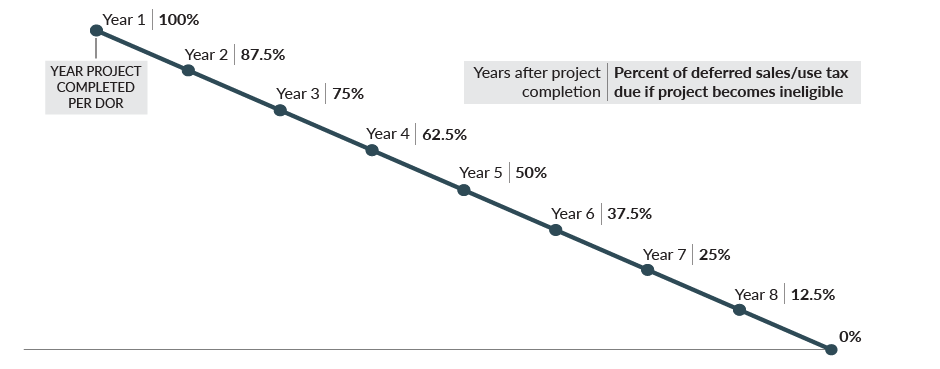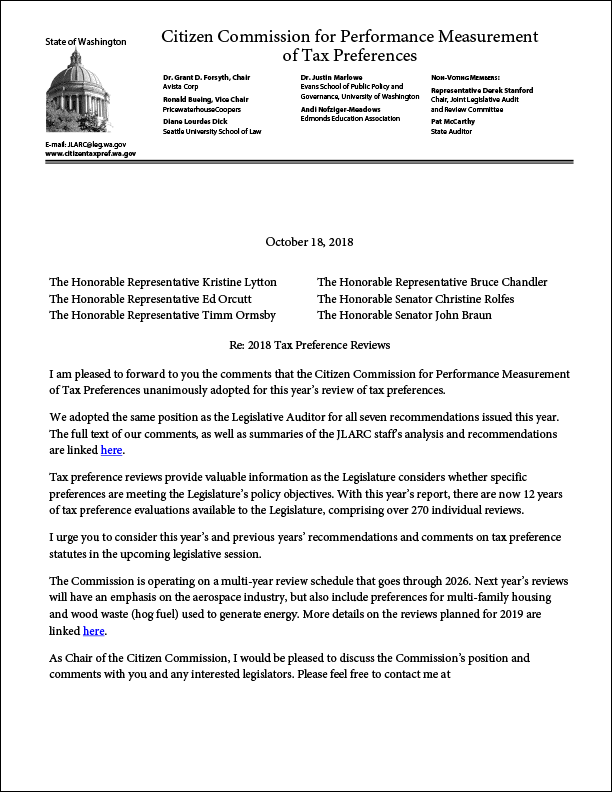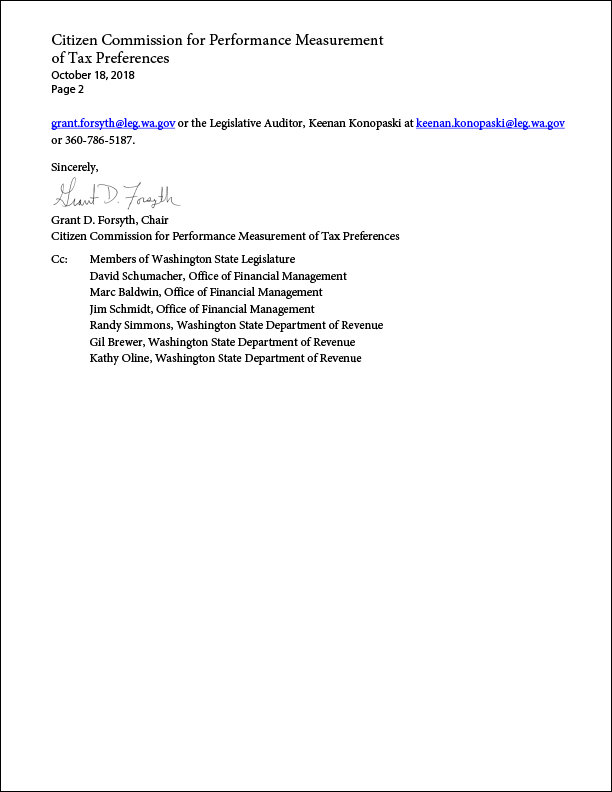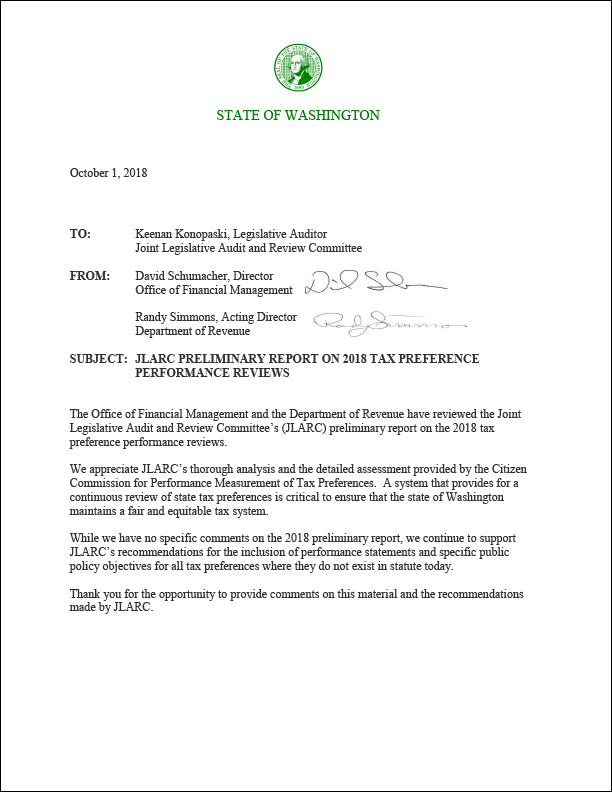Chapter 82.82 RCW, RCW 82.82.020, RCW 43.31C.005
Community Empowerment Zones - Tax Deferral Program
RCW
82.82.010
Definitions
The definitions in this section apply throughout
this chapter unless the context clearly requires otherwise.
(1) "Applicant"
means a person applying for a tax deferral under this chapter.
(2) "Corporate
headquarters" means a facility or facilities where corporate staff employees are
physically employed, and where the majority of the company's management services are
handled either on a regional or a national basis. Company management services may
include: Accounts receivable and payable, accounting, data processing, distribution
management, employee benefit plan, financial and securities accounting, information
technology, insurance, legal, merchandising, payroll, personnel, purchasing
procurement, planning, reporting and compliance, research and development, tax,
treasury, or other headquarters-related services. "Corporate headquarters" does not
include a facility or facilities used for manufacturing, wholesaling, or warehousing.
(3) "Department" means the department of revenue.
(4) "Eligible area"
means a designated community empowerment zone approved under RCW 43.31C.020. (5)(a)
"Eligible investment project" means an investment project in a qualified building or
buildings in an eligible area, as defined in subsection (4) of this section, which
will have employment at the qualified building or buildings of at least three hundred
employees in qualified employment positions, each of whom must earn for the year
reported at least the average annual wage for the state for that year as determined by
the employment security department.
(b) The lessor or owner of a qualified
building or buildings is not eligible for a deferral unless:
(i) The underlying
ownership of the building or buildings vests exclusively in the same person; or
(ii)(A) The lessor by written contract agrees to pass the economic benefit of
the deferral to the lessee;
(B) The lessee that receives the economic benefit
of the deferral agrees in writing with the department to complete the annual survey
required under RCW 82.82.020; and
(C) The economic benefit of the deferral
passed to the lessee is no less than the amount of tax deferred by the lessor and is
evidenced by written documentation of any type of payment, credit, or other financial
arrangement between the lessor or owner of the qualified building and the lessee.
(6) "Investment project" means a capital investment of at least thirty million
dollars in a qualified building or buildings including tangible personal property and
fixtures that will be incorporated as an ingredient or component of such buildings
during the course of their construction, and including labor and services rendered in
the planning, installation, and construction of the project.
(7) "Manufacture"
has the same meaning as provided in RCW 82.04.120.
(8) "Operationally complete"
means a date no later than one year from the date the project is issued an occupancy
permit by the local permit issuing authority.
(9) "Person" has the same meaning
as provided in RCW 82.04.030.
(10) "Qualified building or buildings" means
construction of a new structure or structures or expansion of an existing structure or
structures to be used for corporate headquarters. If a building is used partly for
corporate headquarters and partly for other purposes, the applicable tax deferral is
determined by apportionment of the costs of construction under rules adopted by the
department.
(11) "Qualified employment position" means a permanent full-time
employee employed in the eligible investment project during the entire tax year. The
term "entire tax year" means a full-time position that is filled for a period of
twelve consecutive months. The term "full-time" means at least thirty-five hours a
week, four hundred fifty-five hours a quarter, or one thousand eight hundred twenty
hours a year.
(12) "Recipient" means a person receiving a tax deferral under
this chapter.
(13) "Warehouse" means a building or structure, or any part
thereof, in which goods, wares, or merchandise are received for storage for
compensation.
(14) "Wholesale sale" has the same meaning as provided in RCW
82.04.060. [ 2008 c 15 § 1.]
[ 2008 c 15 § 1.]
*Reviser's note: RCW 82.82.020 was amended by 2017 c 135 § 43,
changing "annual survey" to "annual tax performance report," effective January 1, 2018.
Effective date—2008 c 15: "This act takes effect July 1, 2009." [ 2008 c 15 §
10.]
RCW 82.82.020
Application for deferral - Annual tax performance report.
(Effective January 1, 2018.)
(1) Application for deferral of taxes under this
chapter can be made at any time prior to completion of construction of a qualified
building or buildings, but tax liability incurred prior to the department's receipt of
an application may not be deferred. The application must be made to the department in a
form and manner prescribed by the department. The application must contain information
regarding the location of the investment project, the applicant's average employment in
the state for the prior year, estimated or actual new employment related to the project,
estimated or actual wages of employees related to the project, estimated or actual
costs, time schedules for completion and operation, and other information required by
the department. The department must rule on the application within sixty days.
(2) Applications for deferral of taxes under this section may not be made after
December 31, 2020.
(3) Each recipient of a deferral of taxes under this chapter
must file a complete annual tax performance report with the department under RCW
82.32.534. If the economic benefits of the deferral are passed to a lessee as provided
in RCW 82.82.010(5), the lessee must file a complete annual tax performance report, and
the applicant is not required to file the annual tax performance report.
(4) A
recipient who must repay deferred taxes under RCW 82.82.040 because the department has
found that an investment project is no longer an eligible investment project is no
longer required to file annual tax performance reports under RCW 82.32.534 beginning on
the date an investment project is used for nonqualifying purposes.
[
2017 c 135 § 43;2010 c 114 § 148;2008 c 15 § 2.]
NOTES:
Effective date - 2017 c 135: See note following RCW
82.32.534.
Application- Finding-Intent-2010 c 114: See notes following
RCW 82.32.585.
Effective date- 2008 c 15: See noted following RCW
82.82.010.
RCW 82.82.030
Deferral certificate
(1) The department
must issue a sales and use tax deferral certificate for state and local sales and use
taxes due under chapters 82.08, 82.12, and 82.14 RCW on each eligible investment project
meeting the requirements of this chapter.
(2) No certificate may be issued for an
investment project that has already received a deferral under chapter 82.60 or 82.63 RCW
or this chapter, except that an investment project for qualified research and
development that has already received a deferral may also receive an additional deferral
certificate for adapting the investment project for use in pilot scale manufacturing.
(3) The department must keep a running total of all deferrals granted under this
chapter during each fiscal biennium.
(4) The number of eligible investment
projects for which the benefits of this chapter will be allowed is limited to two per
biennium. The department must approve deferral certificates for completed applications
on a first in-time basis. During any biennium, only one deferral certificate may be
issued per community empowerment zone.
[ 2008 c 15 § 3.]
NOTES:
Effective date—2008 c 15: See note following RCW 82.82.010.
RCW
82.82.040
Repayment of deferred taxes. (Effective January 1,
2018.)
(1) Except as provided in subsection (2) of this section and RCW
82.32.534, taxes deferred under this chapter need not be repaid.
(2)(a) If, on
the basis of the tax performance report under RCW 82.32.534 or other information, the
department finds that an investment project is no longer an "eligible investment
project" under RCW 82.82.010 at any time during the calendar year in which the
investment project is certified by the department as having been operationally
completed, or at any time during any of the seven succeeding calendar years, a portion
of deferred taxes are immediately due according to the following schedule:
| Year in which use occurs |
% of deferred taxes due: |
| 1 |
100% |
| 2 |
87.5% |
| 3 |
75% |
| 4 |
62.5% |
| 5 |
50% |
| 6 |
37.5% |
| 7 |
25% |
| 8 |
12.5% |
(b) If the economic benefits of the deferral are passed to a lessee as provided in RCW
82.82.010(5), the lessee is responsible for payment to the extent the lessee has
received the economic benefit.
(3) The department must assess interest at the
rate provided for delinquent taxes under chapter 82.32 RCW, but not penalties,
retroactively to the date of deferral. The debt for deferred taxes will not be
extinguished by insolvency or other failure of the recipient. Transfer of ownership does
not terminate the deferral. The deferral is transferred, subject to the successor
meeting the eligibility requirements of this chapter, for the remaining periods of the
deferral.
[ 2017 c 135 § 44; 2010 c 114 § 149; 2008 c 15 § 5.]
NOTES:
Effective date—2017 c 135: See note following RCW 82.32.534.
Application—Finding—Intent—2010 c 114: See notes following RCW
82.32.585.
Effective date—2008 c 15: See note following RCW
82.82.010.
RCW 82.82.050
Qualified employment positions -
Requirements.
The qualified employment positions must be filled by the end of the
calendar year following the year in which the project is certified as operationally
complete. If a recipient does not meet the requirements for qualified employment
positions by the end of the second calendar year following the year in which the project
is certified as operationally complete, all deferred taxes are immediately due.
[
2008 c 15 § 6.]
NOTES:
Effective date—2008 c 15: See note
following RCW 82.82.010.
RCW 43.31C.005
Findings - Declaration
(1)
The legislature finds that:
(a) There are geographic areas within communities that
are characterized by a lack of employment opportunities, an average income level that is
below the median income level for the surrounding community, a lack of affordable
housing, deteriorating infrastructure, and a lack of facilities for community services,
job training, and education;
(b) Strategies to encourage reinvestment in these
areas by assisting local businesses to become stronger and area residents to gain
economic power involve a variety of activities and partnerships;
(c) Reinvestment
in these areas cannot be accomplished with only governmental resources and require a
comprehensive approach that integrates various incentives, programs, and initiatives to
meet the economic, physical, and social needs of the area;
(d) Successful
reinvestment depends on a local government's ability to coordinate public resources in a
cohesive, comprehensive strategy that is designed to leverage long-term private
investment in an area;
(e) Reinvestment can strengthen the overall tax base
through increased tax revenue from expanded and new business activities and physical
property improvement;
(f) Local governments, in cooperation with area residents,
can provide leadership as well as planning and coordination of resources and necessary
supportive services to address reinvestment in the area; and
(g) It is in the
public interest to adopt a targeted approach to revitalization and enlist the resources
of all levels of government, the private sector, community-based organizations, and
community residents to revitalize an area.
(2) The legislature declares that the
purposes of the community empowerment zone act are to:
(a) Encourage reinvestment
through strong partnerships and cooperation between all levels of government,
community-based organizations, area residents, and the private sector;
(b) Involve
the private sector and stimulate private reinvestment through the judicious use of
public resources;
(c) Target governmental resources to those areas of greatest
need; and
(d) Include all levels of government, community individuals,
organizations, and the private sector in the policy-making process.
[
2000 c 212 § 1.]






